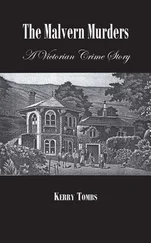If it was difficult to take what Brother-in-law said about his plans to murder the President seriously, that is partly because it was difficult to take Slim Brooks seriously. Not that Slim didn't seem honest. On the contrary, he seemed too honest to get himself involved with anyone heavy enough to actually go out and assassinate a Presidentâ if Slim would have to lie about it afterwards.
To suspect Slim of being a conspirator seemed too paranoid for words.
In April of 1976, I again had occasion to think about paranoia in relation to the John Kennedy assassination. I attended a lecture in Atlanta by none other than Jim Garrison, for whom by then I felt a lot of sympathy.
In light of what I remembered now, it seemed his suspicions of me were only slightly misplaced. I was not a field agent in the assassination; I was among those who helped plan it!
In the question period after his speech Garrison said something I found both significant and touching: "Of course, I have to lean over backwards not to be paranoid, because I have been accused of paranoia in the past."
One of his diagnosticians had been me; now I was dealing with exactly the same double bind of trying to probe conspiracies without coming on like a paranoid in the eyes of my friends.
Through an emissary I let it be known to Garrison that I wanted to meet with him. His reply: "Not only do I not want to meet with Kerry Thornley, I don't even want to hear his name. In fact, I don't even want to think about Kerry Thornley!"
Feeling very much alone, I continued my daily dealings with what were obviously conspiraciesâ including a correspondence with a man I hoped was a charming crank who was telling me in his letters "why we Fascists assassinated Kennedy." How I got on Stan Jamison's mailing list in the first place was a mystery to me. Since 1970, though, Greg Hill and I both had been receiving from him everything from advice on how to grow organic sprouts to racist newspapers published by White Christians who were armed and quite dangerous.
In reply to one of my memos about Kirstein that had fallen into his hands indirectly, he wrote me to say that the tragedy in Dallas was plotted by the Secret Order of Thule in such a way as to assure that no cover-up could remain convincing forever. Motive: to make the American public paranoid about their government and mass media. For paranoia, he told me, is a big step in the direction of mental health.
People who become paranoid, Stan Jamison wrote, will not rest until they discover every last shred of truth.
Among the devices used to encourage awareness of conspiracy were the many crude Oswald impersonations that occurred just previous to the assassination. Puzzled for more than a decade about exactly that mystery, I had to admit this was the first credible hypothesis to explain it without making the assassins look like idiots. And had they been less than geniuses, there would have been no cover-up at all.
Jamison further informed me that the conspiracy was constructed in concentric circles, like Chinese boxes, with descending levels, so that only the "man at the center" understood afterwards exactly what had happened. Of course, I could not ignore the possibility that man might have been Brother-in-law.
What brought together the many loose ends in the John Kennedy murder mystery for me was this realization that it was a maximum complicity crime. Various factions must have been deliberately implicated on a blind-alliance basis, so that once the event occurred, every group of conspirators was startled at evidence of participation by someone besides themselves.
Like Brother-in-law, Jamison seemed morbidly fascinated with Hitler and Nazi Germany. Both men mentioned particular little-known aspects of the Third Reich, such as the secret pagan rituals of the S.S. and the occult beliefs of Hitler's cohorts. Both repeated a rumor that Nazi rocket scientists discovered energy secrets that oil companies were repressing to this day. Whether either or both were living some kind of macabre hoax or were absolutely fanatical was impossible to determine, since neither man was without humor. For instance, Jamison always signed off with, "Love is alive and well."
As might be anticipated, it struck me that perhaps Stan Jamison and Gary Kirstein were the same person, so in 1977 I dropped in unexpectedly at his address in Sacramento, California. Not only was Jamison not the same man I had conversed with in New Orleans, but it was plain that the spine-chilling ranting in his letters was just a big put-on.
That isn't to say his information about the assassination could not have been valid. A warm, intelligent human being, obviously unsympathetic to Fascism, he nevertheless seemed quite versed in secret society and intelligence community politics.
"I come on all hairy like that in my letters," he told me, "to scare off government agents." Although that statement didn't sound convincing, it seemed a safe bet his motives were not cruel, a consideration that leaves undetermined whether or not they were misguided.
How paranoid is it to fear such an individual? Perhaps that is the wrong question. Maybe we should ask ourselves: Is it rational to dismiss them in the name of popularized notions of sanity?
Later on I was to encounter a rumor that Stan Jamison acquired his information from one Michael Stanley, then serving a prison term in California. As Lovable Ol' Doc Stanley, Michael Stanley was known to me personally as one of the heavier, darker characters of the California counter-culture. We met each other in a hip coffee house after I moved to Los Angeles about a year after John Kennedy's assassination. Although I didn't like to admit it for fear of seeming paranoid, I found Michael Stanley terrifying.
Perhaps if we clearly defined this thing we call paranoia it would not cause us to behave so foolishly.
Genuine paranoia actually contains at least three ingredients: fear, suspicion and mystification. Technically, it is heightened awareness, but not yet perfect awareness.
Professional espionage agents are, for example, frequently both suspicious and mystified, but have long since learned to live without much fear. For that reason, we don't call them paranoids.
To be both frightened and confused, without a systematic method of blaming others for those conditions, is to be vulnerable to some other psychiatric classification than paranoia.
Fear and suspicion combined with exact, provable knowledge as to the identity of one's oppressors is generally considered a prerequisite for heroism. Paranoia, then, only exists in politics where fear and suspicion linger for no external reason and, as is more often true, in cases where the subject is incorrect about who to suspect and what to fear, the condition of mystification.
Unfortunately nearly all oppressors in conspiracy politics strive skillfully to mystify their victims, often with enormous resources to help the work along.
"The arguments he used to justify his use of the alias suggest that Oswald may have come to think that the whole world was becoming involved in an increasingly complex conspiracy against him… Oswald was overbearing and arrogant throughout much of the time between his arrest and his own death. He consistently refused to admit involvement in the assassination or in the killing of Patrolman Tippit." — The Warren Report
Next I shall provide additional evidence to that uncovered by critics of the Warren Commission that Oswald's perceptions of reality may have been far more accurate even than the words of his accusers.
I have a photocopy of a letter I sent my parents in 1961, wherein I mentioned that Slim Brooks gave me a haircut for my birthday on April 17th. In a tone of fascination, I added the remark that Slim had worked as a ship's barber, for it seemed this swashbuckling soldier of fortune knew how to do everything. In my letters to my father and mother, I shared all that seemed important, and even told them that Slim had good ideas about where to meet girls.
Читать дальше












